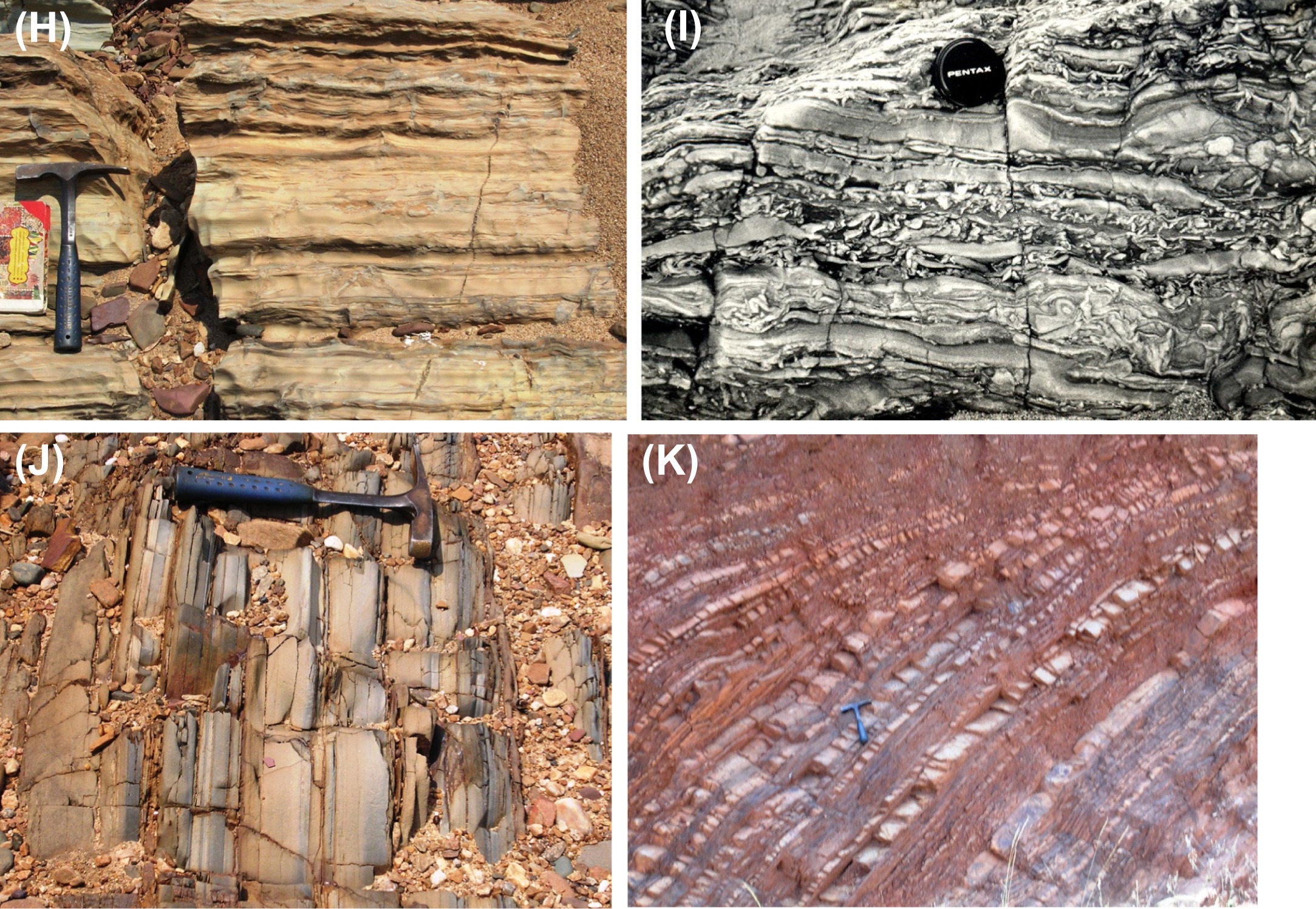Bodela Vagu Fm
Lithology and Thickness
Dolomitic limestone. An association of argillaceous limestone, dolomitic limestone, dolomite with common siliciclastic intercalation in the lower half, constitutes the Bodela Vagu Formation (w200 m). Dolomitic algal laminate and stromatolitic limestone predominate in the upper part of the formation. Siliciclastic intercalations include thick, massive beds of brecciaconglomerate, gritty quartzite to fine grained quartz arenite showing trough cross-strata, ripple laminations and salt pseudomorphs. Partings of calcareous mudstone or siliceous limestone often show asymmetric ripples, polygonal shrinkage cracks and water escape features (Fig. – image H). The algal laminitee stromatolite-bearing dolomitic limestone is marked by molar-tooth structure, stylolite, syneresis crack filled with sparry calcite, and LLH stromatolite heads. Carbonate breccia complexes with circular to elliptical outline and varying in size from a few tens of meters to a few kilometers, locally cross-cut the bedded units of the Bodela Vagu Formation.
[Figure: Pranhita-Godavari valley basin Field photographs illustrating lithology and sedimentary structures. (H) Bodela Vagu Fm - Laminated lime mudstone. (I) Somnur Fm - Heterolithic sandstone-shale with profuse desiccation crack in-fills. (J) Tarur Nala Fm - Ash beds of Kotturu Somanpalli. (K) Tarur Nala Fm - Graywacke-shale turbidite with cherty intervals. (from Saha et al., 2016)]
Relationships and Distribution
Lower contact
Unconformably underlain by Kotapalle Limestone Fm of upper Devalmari Gr
Upper contact
Overlain by the Somnur Fm
Regional extent
Approximately coeval with Jakaram Conglomerate Fm (Damala Gutta Conglomerate Fm) of Mulug Gr of Pranhita-Godavari west basin
GeoJSON
Fossils
Age
Depositional setting
Subtidal to intertidal flat
Additional Information
